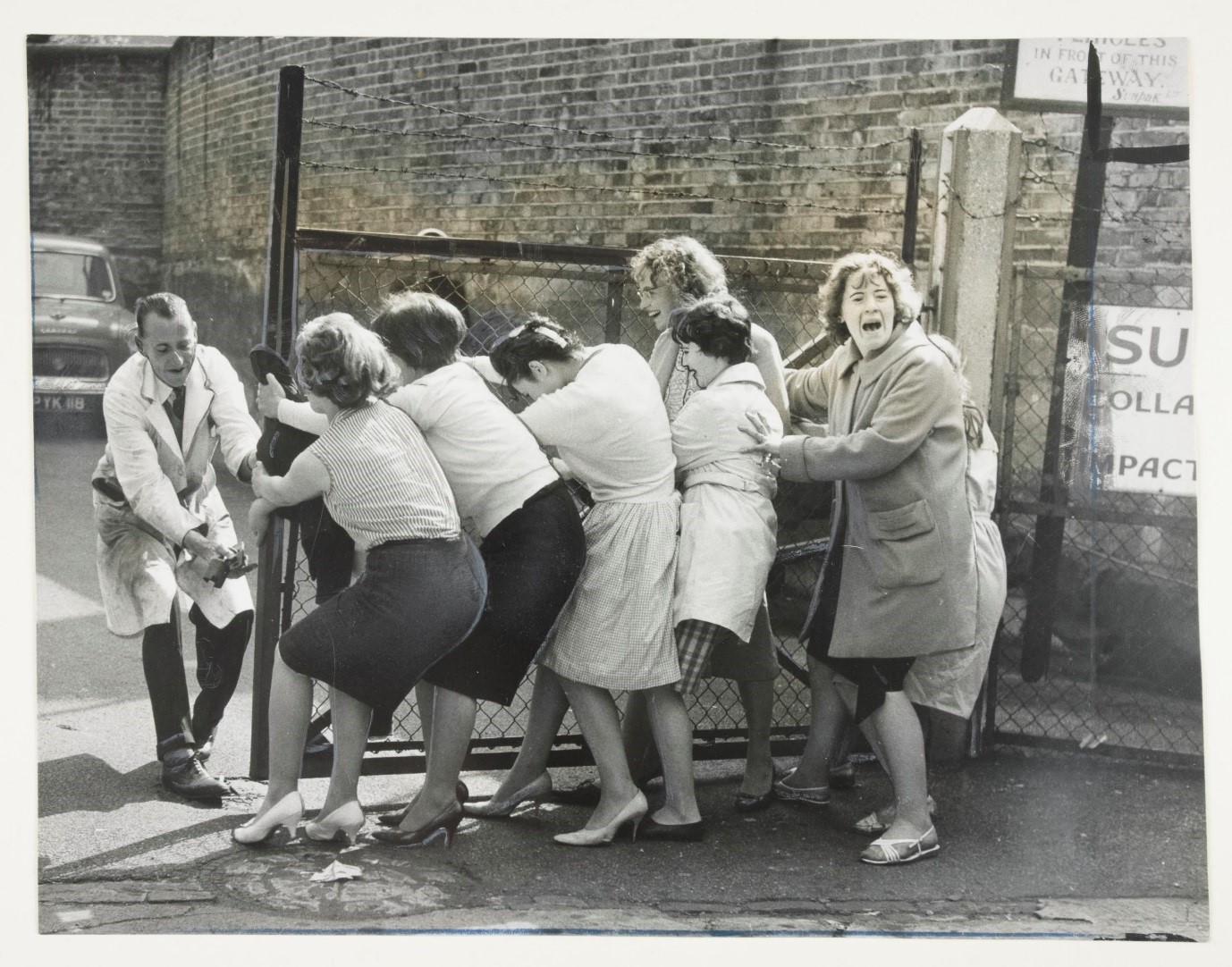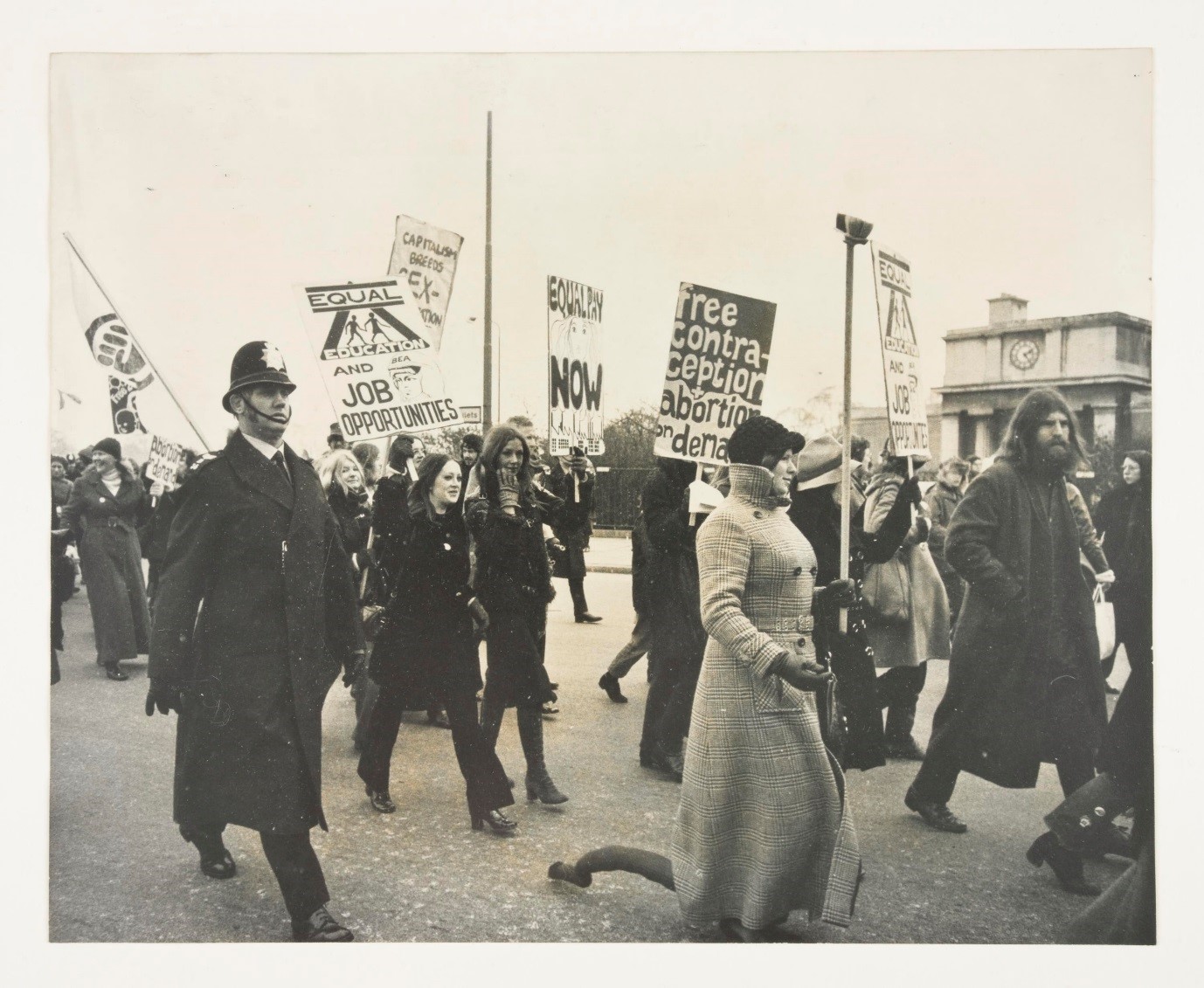2018 marks 100 years since the passing of the Representation of the People Act (1918), the first UK law to allow (some, but not all) women the right to vote in elections. To commemorate the centenary, we developed a small display exploring the representation of women in the Daily Herald Archive, a former newspaper picture library held at the National Science and Media Museum. The archive includes many milestones in the history of women’s political organising, including workers’ strikes led by women, campaigns for equal pay and rights, and the development of new waves of feminist activism in the 1960s and early 1970s. The women represented in the archive range from bus workers to carers, activists and political leaders, and in many ways the struggles represented in the archive still feel current today.
This blog post showcases a few of the images selected for display in the exhibition, along with detailed commentary about the way in which the Daily Herald workers interpreted these photographs.

One series selected for the display, categorised under ‘strikes—post-war—miscellaneous’, shows a group of fourteen metal factory workers on strike at Sunpak Ltd in Kennington, London. The workers, all young women, are photographed during a short strike in September 1960. The photographs and contact prints in the folder show the workers standing outside the factory and in communication with other factory staff. The exact nature of the dispute that led to the strike is not cited in the image captions. Instead the accompanying article focuses on the status of a marriage between striker Doris McGuigan and her then husband Frank. The first sentence in the article, written by Ann Butler, reads
‘A husband told his wife yesterday: “Choose between me and the strike. Any more picketing and I leave.” And 19-year-old Doris McGuigan said “I believe he would go—and take our baby with him. I want to stand by the girls, but I think I’ll have to pack it in.”’ (Daily Herald Archive at National Science and Media Museum, Bradford)
The focus on the state of the marriage of strikers rather than the nature of the dispute reflects the primary societal value of women at that point in time as wives, mothers and carers. It’s hard to imagine this focus on marital relations being used to lead reports about men in industrial action, whose labour disputes are extensively documented elsewhere in the Daily Herald Archive. While not the original intention of the article itself, this juxtaposition draws attention to the divide between the different types of work expected of women—both paid (factory work) and unpaid (housework, caring, matrimonial duties).

In this photograph of a women’s liberation movement march in London, women are shown marching with placards and banners with slogans including ‘Free Contraception and Abortion On Demand’, ‘Free 24 Hour Nurseries’ and ‘Equal Pay Now’. Protestors swear at photographers and side eye police present at the demonstration.
The march is documented in other contemporary press platforms as a significant moment in history. However, the caption on the back of the image in the Daily Herald Archive demeans the march, choosing to focus on one male member of the march and drawing attention to the lack of men in the movement.
‘A Man Among The Militant Women. A bearded man among the militant women as they left Speaker’s Corner, Hyde Park, to march to Trafalgar Square in demand for equal rights with men. A handful of men joined the march. It was organised by the Women’s Liberation Movement which has “four paid-up male members”. One of them declared this is a social issue.’ (Daily Herald Archive at National Science and Media Museum, Bradford)
This caption almost acts in opposition to the series of photographs, which individually highlight the extent and size of the march. The photograph which features the lone bearded man does not in any way focus on his presence or centre him as a subject—it is instead simply a photograph of marchers carrying banners and placards, one of whom happens to be a man. The way in which the Daily Herald journalists interpret the image recentres the demonstration around a man and the involvement (or lack of involvement) of men within the developing Women’s Liberation Movement.
To revolt is to rebel against authority or established order. It can also mean to cause feelings of disgust. The women of the Daily Herald Archive are often revolting against unfair systems, and the Daily Herald in turn sometimes presents them as subjects of ridicule and disgust. Because of this, in many ways the women of the archive are doubly rebellious. By showcasing both the images and the accompanying articles, this display hopes to illustrate the ways in which the use of images by the media is never neutral and, in many cases, is highly political.
Revolting Women: Protest and Politics in the Daily Herald Archive is on display at the National Science and Media Museum from 10 January to 28 February 2018.
Fascinating blog post and wish I could get to the exhibition. Will pass on to my southern friends.
Doris McGuigan was my mum – the baby referred to was me! Happy to say their marriage survived and she continued to be a proud union member and supported strikes throughout her working life